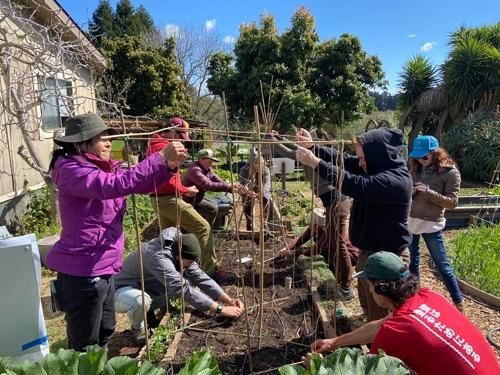Support Today’s Science Educators and Learners
November 16, 2022
This is the most functional unit I’ve taught in 15 years. It’s one that allows kids to create something they can see in the real world. It outlives the moment, and gives kids a reason to proudly say, “Hey everyone, come check out my trellis!
– Ilana Lowe, fourth & fifth grade teacher
Dear friends,
It’s been an eventful year at BSCS Science Learning. This spring, we released two major instructional materials programs for middle and high school students nationwide, including our new flagship biology program, BSCS Biology: Understanding for Life.
We are also making moves to engage younger learners.
Emily Harris is one of several BSCS research scientists who is particularly invested in transforming science teaching and learning at the elementary level. Emily began her career in education by running school gardens, and she has championed place-based science learning ever since. A couple years ago, she had an idea to support elementary teachers in meeting the “engineering design” expectations of the Next Generation Science Standards—by returning to her roots.
So she partnered with Life Lab, a leader in school garden education in Santa Cruz, California, and secured funding from the US Department of Agriculture to create Engineering in the Garden.
This program helps upper elementary teachers and garden educators engage students in designing solutions to address real-world problems that arise in schoolyards and school gardens. And now, teachers like Ilana Lowe are confidently facilitating robust outdoor learning experiences in which students research, design, and build full-size trellises to support climbing pea plants.
Ilana admits she had some skeptical students at the start. Nine-year-old Cheryl was worried that her ideas would be ignored. Theo, a history and English buff, was not interested in building things. And Antonio felt frustrated as he failed to tie the knots properly. Ilana found it incredibly endearing to watch her students become better communicators and collaborators along the way.
Cheryl told Ilana that she learned what it means to share and consider all ideas in a safe space. Theo says he learned that the iterative process of designing, building, and revising is much like the writing process—and now he feels a different connection to science. And Antonio says he learned that his classmates, who helped him figure out how to tie the knot, can be great teachers too.
These lessons will serve the students well as they continue on to middle school science—where maybe we’ll meet them again. Either way, we will keep embracing every opportunity to impact young learners.
And we hope to continue doing this work, especially where it’s needed most, in partnership with friends like you. Will you make a donation to support today’s science educators and learners?
Sincerely,

Daniel C. Edelson
BSCS Executive Director
